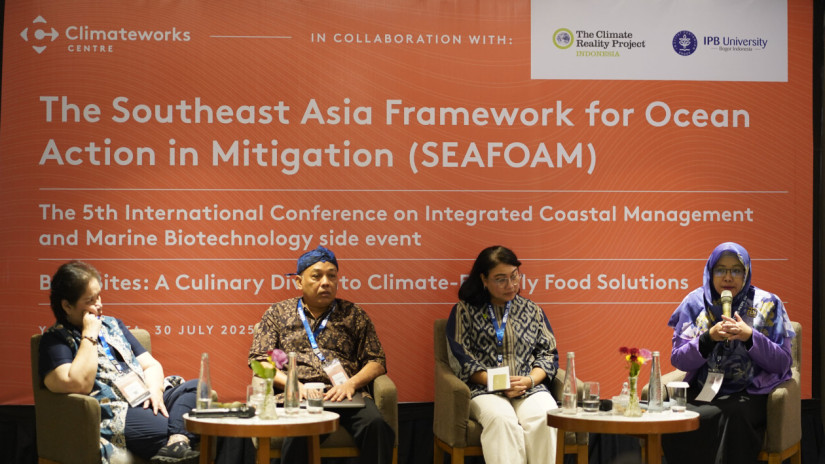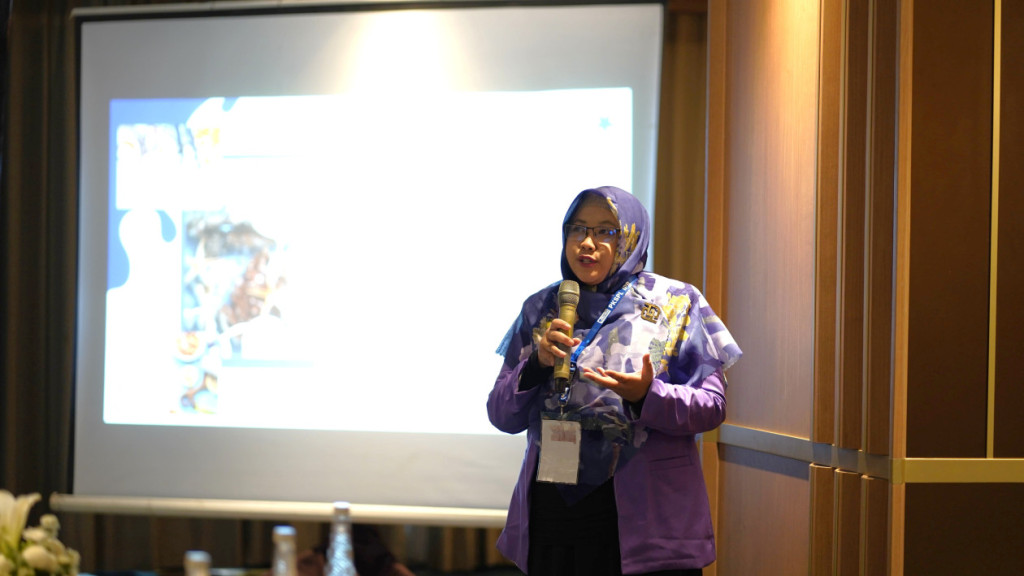
As an archipelagic country, Indonesia possesses rich marine resources. These marine animals can serve as blue foods, nutrient-rich food sources that offer numerous benefits for both communities and the environment.
This issue was highlighted in a discussion titled “Blue Bites: A Culinary Dive into Climate-Friendly Food Solutions” held at the Royal Ambarrukmo Hotel on Wednesday (Jul. 30).
Dr. Atin Prabandari from the Department of International Relations, Faculty of Social and Political Sciences (Fisipol UGM), emphasized that women’s contributions are often overlooked in discussions on blue foods. In fact, according to Dr. Prabandari, women play a crucial role in the post-harvest processing and management of blue foods.
“Women have a majority role in the blue food sector, particularly in post-harvest handling and processing. Their involvement accounts for over 60–70%,” she explained.
Dr. Prabandari stressed the importance of recognizing women’s contributions and offered several suggestions to raise public awareness about their role.
First, she emphasized the need to shift mindsets, especially regarding cultural and economic perspectives, including among women themselves. Second, she called for documentation of women’s contributions in this field to foster collective awareness about women’s roles in the blue food ecosystem.

Dr. Tukul Rameyo Adi, a lecturer at IPB University, addressed the concept of blue foods and “blue bites.” He explained that blue bites are the direct product of blue foods, foods derived from aquatic ecosystems such as seas, coastal areas, rivers, and lakes. Dr. Adi noted that by consuming blue foods, communities help reduce carbon emissions.
“Blue foods like fish, seaweed, and shellfish are rich in nutrients and have a lower carbon footprint than red meat. Moreover, they support the economies of coastal and inland water communities,” he said.
Echoing the importance of documentation, Meilati Batubara from the NUSA Indonesian Gastronomy Foundation shared her experience in recording blue food-based local menus. She and her team have successfully collected 500 recipes from across Indonesia.
She believes this abundance stems from the heritage of Indonesian ancestors, who traditionally consumed marine animals.
She cited poro-poro fish as a local dish consumed by communities around Lake Toba, and nyale, a type of marine worm, which is a traditional delicacy in Lombok. Meilati continues to support the documentation and recording of blue food-based local dishes as part of Indonesia’s rich culinary heritage.
The discussion was part of the 5th International Conference on Integrated Coastal Management and Marine Biotechnology. Erwin Sabarini, representing Climateworks Centre, stated that the event introduced the concept of the Blue Food Nexus, offering participants a firsthand experience of tasting seafood and freshwater dishes.
It also served as a platform to explore innovations in blue foods and opened dialogue on food security, health, marine conservation, and climate policy.
“Blue foods are not just about what’s on our plate; they represent a tangible and just form of climate action,” he concluded.
Author: Lazuardi
Editor: Gusti Grehenson

